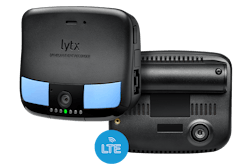The Trucking Law segment is a monthly feature on Overdrive, in which we pose commonly asked questions from truckers and owner-operators to legal experts. In this installment, attorney Brad Klepper addresses obtaining video from police agencies to help truckers’ cases when it comes to accidents or citations. Find all Trucking Law installments via this link.
I had a case where a truck driver collided with a passenger vehicle. The officer, who did not witness the accident, interviewed the other driver and wrote my client several citations.
My client was adamant that he did nothing wrong and that the other car was solely at fault. He said he could prove it.
I later received a DVD from my client showing the view from his forward-facing camera. Traveling below the speed limit on a highway with three lanes in each direction, my client was in the far right lane. A sedan passed him in the far left lane, then cut across two lanes to try and make an exit. My client tried to avoid the collision and clipped only the back of the car as it passed in front of him at essentially a 90-degree angle.
After I shared the video with the prosecuting attorney, my client’s citation issues went away. So did the civil lawsuit the driver of the other vehicle had filed against my client’s employer. In the legal arena, knowledge is everything. Onboard cameras provide one of the best ways to learn critical information – the good, the bad and the ugly – about your case. This knowledge allows you to make better decisions, such as whether to contest a matter or settle. This is especially true in accident situations.
However, what good does a video do in a routine traffic stop? Oftentimes, not much.
In some cases, though, wouldn’t it be nice to review exactly what the officer saw when, for example, he issued a citation for some piece of defective equipment — perhaps a “damaged” hazmat placard?








